It’s often said – correctly – that modern cars (mostly crossovers now) all look pretty much the same. But it goes deeper than that.
Modern cars are mostly the same. Literally.
Beneath their looks there’s not much difference. Once upon a time, it was different. A survey of what was will provide some insight.
“Safety” –
This is now general. Every modern car (crossover) is “safe,” or touts how “safe” it is. By which is meant it has all or at least most of the very latest “safety” equipment, such as Lane Keep Assist and Brake Assist and a heaping helping of the other “assistance technologies” they all have. All of them also have a plethora of air bags, 4-6 at least – because the government requires them all to have them. They are all required to pass the same “safety” tests and meet the same “safety” standards – making them all very “safe” indeed. If there any differences, they are inconsequential. Nothing that sets one brand apart from another.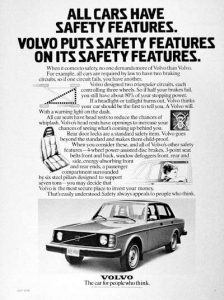
Once upon a time, one brand was very different – because it made cars that were much safer than almost every other car then available. Those cars were Volvos. The brand built its identity upon safety – and the cars actually were, both in and of themselves and especialy relative to most other cars – which in those days of differences were not designed to withstand impacts and rollovers as Volvos were. Volvos had seatbelts before they were mandatory for all cars. If you wanted a safe car, a Volvo was the car for you.
And if you preferred a car designed to emphasize something else, they were available, too – because the government hadn’t yet mandated that every car be designed like a Volvo.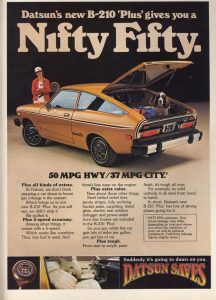
Light –
All new cars – even little cars – are heavy cars. many are heavy – even preposterously – heavy. There isn’t one that weighs less than a ton anfd most weigh closer to two, including some small cars.
The reason why has to do with the general mandating of “safety,” as per above. It is difficult to build a car that is both very light and very “safe” – as regards how it peforms in a crash test. Which by the way isn’t really a measure of how safe it is but rather how well it holds up in a government/insurance mafia crash test. It has no bearing on whether it will crash. Thus, “safe” – in the government mandated sense – is a hypothetical.
Weight is actual.
Also the effect of weigh upon mileage, as well as cost. When it was still possible build cars that were very light – some weighing around 1,600 pounds – it was possible to build very efficient and very affordable cars, of which there were a number available. Several of them got better gas mileage than any modern “safe” car excepting hybrid cars, and those are only just barely more efficient and cost a lot more.
It’s a shame people are no longer allowed to buy light, efficient and affordable cars – because all cars are heavy, inefficient and exensive now.
Simplicity –
Government mandates – along with a general cultural shift toward debt-financed extravagance – have made all modern cars complex rather than simple. 
The mandated complexity is a function of the necessity to achieve uniformity – as regards the standards. All cars must meet the same emissions and fuel-economy standards laid down by government regulations; this de facto requires the use of the same technologies – such as direct fuel injection, for instance. It is much more complex than simpler electronic port fuel injection, which – in its turn – is much more complicated than throttle body fuel injection. Each step away from simpler toward more complex being necessary to further fine-tune fuel delivery in order to comply with ever-more-complicated regulatory standards.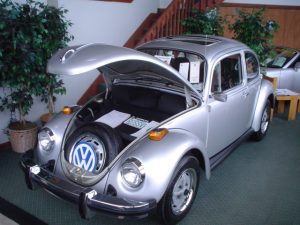
The other driver toward the less-simple in favor of the more complex is the willngness of other people to pay for it – so long as it’s not all at once. They are willing to finance what they can’t really afford. Because almost everyone does this now, there are no longer simple cars – without AC and power options, for instance – that could once-upon-a-time be bought by people who didn’t want to go into debt to get them. It is why the cost of all modern cars is on the order of 30 percent more on the lower end to 50 percent or more on the higher end. It is why family minivans are now $40,000 and 4WD picks ups (equipped with lots pf extravagant accessories) routinely transact for $60,000.
And it is why you can no longer buy a car such as the old VW Beetle or Datsun B210 for the today’s money equivalent of less than $15,000.
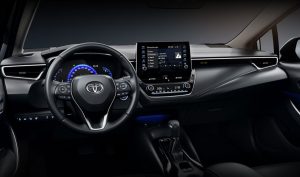
Luxury –
All modern cars are “luxurious” – in terms of the features and amenities that once defined a luxury car. What new car – irrespective of make, model or price – does not come standard with climate control air conditioning? Power windows and locks? A stereo with at least six speakers? These features are as expected as tires. They used to be considered . . . luxury features and you almost always paid extra for them and sometimes, you couldn’t even get them. This conferred real distinction upon those that did come standard with them. They made a Cadillac or a Mercedes something special, a cut-above. And not merely in terms of what they cost.
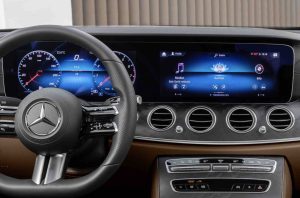
Today, it is mostly what they cost.
But the AC in a new Mercedes doesn’t cool you better than the AC that comes standard in a new Toyota. They all cool equally well. It is true there are still a few features and accessories that are only available in modern luxury cars. Massaging seats, for instance. But just as almost all new cars already have or offer power seats, it is inevitable that even massaging seats will shortly become as common in tomorrow’s Toyotas as they are in today’s Mercedes.
And the more in-common they all become, the less real reason there is to pay more for the “luxury” brand.
Other than for the sake of paying more.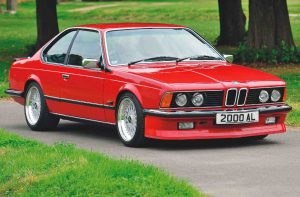
“Sportiness” –
There was a time when certain brands were defined by their sporty flair. A Pontiac, for example, was sportier than a Buick. And a BMW was sportier than either of them. But now all cars are “sporty” – even minivans.
Almost all cars, irrespective of type or brand, have wide, short sidewall performance tires, four wheel disc brakes, aluminum wheels and so stop and corner better than the sports cars of once-upon-a-time. And the sports cars of our time stop and corner so well it is almost boring to drive them because it is so easy to drive them. The same goes for minivans, pick-ups and SUVs – all of which are as confident-feeling at 80 or 90 as the sporty cars of the past were at 60.
Almost none of them have manual transmissions anymore but almost all of them have driver-selectable “modes” for the automatic transmission, plus some type of paddle or tap-up/tap-down gear selector that lets the driver feel. . . sporty, by pretending to control the operation of the automatic transmission.
On the far-right end of the spectrum – exotic high-performance cars not only look increasingly as if they were extruded from the same standardized plastic mold, they function the same, too (e.g., automatic-only, “launch control”).
It makes one think regretfully about the sporty cars of once-upon-a-time, such as the Lotus 7, AC Cobra and MGB – which were as different from other cars in terms of how it felt to drive them as it feels the same to drive any modern “sporty” car.
. . .
Got a question about cars, Libertarian politics – or anything else? Click on the “ask Eric” link and send ’em in! Or email me at [email protected] if the @!** “ask Eric” button doesn’t work!
If you like what you’ve found here please consider supporting EPautos.
We depend on you to keep the wheels turning!
Our donate button is here.
If you prefer not to use PayPal, our mailing address is:
EPautos
721 Hummingbird Lane SE
Copper Hill, VA 24079
PS: Get an EPautos magnet or sticker or coaster in return for a $20 or more one-time donation or a $10 or more monthly recurring donation. (Please be sure to tell us you want a magnet or sticker or coaster – and also, provide an address, so we know where to mail the thing!)
My eBook about car buying (new and used) is also available for your favorite price – free! Click here. If that fails, email me at [email protected] and I will send you a copy directly!











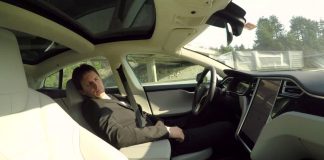
‘Which by the way isn’t really a measure of how safe it is but rather how well it holds up in a government/insurance mafia crash test’
And that data only applies to brand new vehicles under lab conditions and within that car’s weight category.
Thus real world driving factors with cars of mixed size, weight, maintenance, road and weather conditions aren’t factored in.
Just “experts” crashing cars and making pronouncements.
I’ll be getting the Valiant out later today. No power anything, 3 speed on the column, wide open windows and hardtop freedom.
Not a Lotus or a Porsche, but full driver engagement required.
A driver needed, not an operator. A participant in the operation, not luggage.
‘As far as the risk, lookee here: I ride. I ride paranoid. I presume every car within my orbit is driven by an imbecile or a maniac. I never assume otherwise.’
Same with an old car. Same answer when the safety and control trolls hit the forums in every discussion about old cars.
40 years with Mothra, the ’63 Valiant, and I have never felt “unsafe” in it and that includes having rolled the streets and freeways of SoCal and LA for decades.
As for this new stuff? Turbo 3 cylinder hyperkinetic engines hauling around 3600 pounds is not a recipe for longevity. And I keep my cars for a long time: 40 years, 28, the newest for 17.
They can keep this new crap.
Even the newest ’05, has drive-by-wire and electronic power steering.
Excellent observations. Thank you.
The most fun car? buy a Super 7……
Modern formula 1 race cars are a bit better then the modern sports car, hypercar, F1 cars only have power steering and semi automatic transaxles, they are analog otherwise……..
The street cars now have power steering, most are automatics or dual clutch plus they have many driver’s aids controlled by AI and computers, you don’t even drive the car you are just along for the ride, what a joke, you can’t connect with the car, it is a bastardized ruined experience.
To go back to the past get an analog car with no driver’s aids, to get close to an old F1 car spec get a Super 7, a car you can connect with totally. A super 7 and an F1 car are both open top that is important, closed top impairs the driving experience.
A super 7 is a more pure connected driving experience then an F1 car.
The modern cars are getting too big and heavy that is why I like the Super 7.
The driving experience in new cars is getting more and more isolated, disconnected. it is a bit like being half blind, deaf and you can’t feel anything…..lol
If you want the ultimate top down driving experience get a super 7, it is also the exact opposite of a nanny state car.
A super 7 (a 1957 design by Lotus), is the ultimate driving experience, buy or test drive one, it is a completely different experience. The most direct, analog, raw, visceral, unfiltered driving experience, perfect for the hard core driver enthusiasts, this is how a car should be, small, light, agile, fast, no frills, no driver’s aids, mechanical art made to go fast only, no luxury, no doors or roof, some have no windshield, nothing extra, with a 4 cylinder engine about 1200 lb. A car you can connect with completely.
The closest thing to an old F2 car for the street, very fast,
A Super 7 weighs around 1200 lb. a modern nanny state vehicle could be 4100 lb.
The Super 7 is built with a steel tube frame like the older race cars, it is very strong, stronger then unibody design and very light (under 100 lb.), that is why the Super 7 handles so well, it is low, light and very stiff.
A Donkervoort a Super 7 clone, with an Audi 1.8 lt. 20 valve turbo engine in 2003, 2004 had the world record lap time for any street legal car on the Nurburgring, (quite a bit faster then the tesla plaid lap time).
A Super 7 is the 2nd most copied car in history, 160 companies made copies, (Cobra was the most copied car), the Super 7 is a close copy of a 1913 Bugatti Type 22, the specs are close, one of the first small light cars (did Lotus copy it?).
Chris Harris reviews the Caterham Super 7…….he says it is the best sports car….
https://www.youtube.com/watch?v=JAwNfgvF_Ww
It’s not just cars that government over regulates into conformity.
Just look at any newly built house today. Thanks to zoning and building codes, good luck finding a newly built house that is out of the norm today.
Today with both new cars and houses, you have the illusion of choice. No actual choice. A couple all too similar “products” and that is that. Don’t like those or they don’t work? Good luck to ya!
Want a small house on a big lot? Nope. In some cases now, good luck finding a big house on a big lot…. Something with less square footage? Its likely a duplex, “townhouse” or condo only.
Want a regular sized normal house built out of high quality material that aren’t flashy? Nope. Fancy today means flashy, not good quality it seems. You can have granite countertops, but nope not plaster walls.
Now a days you get in my area twenty builders building nearly the same 1700-2400 vinyl sided 12 to an acre single family house. A house you will be replacing major part on under twenty years old. Like the windows and siding! Stuff that used to take until the house was 50-60 years old.
I call them “cookie cutter” houses, RichB, and there is nothing special about any of them that is worth the price the bank (or former owners) ask for them. They are nothing more than boxes with windows and a few doors, sad to say. And you pay an arm and a leg for them. And even then, you get to pay property taxes, so in the end, you just rent it for the rest of your life, if you are lucky enough to pay it off. It would have been nice if the power that be had just left our cars alone, so that we could enjoy something…
Hi Shadow,
I happened to be in one of these McMansion developments recently. Every house a big gray box on a small lot. No trees to speak of. No privacy to speak of. These are prolly $500k houses that are built to the cheapest standards possible. But they are big outside and showy inside. I do not understand the appeal, at all.
But then, I’m not “vaccinated.”
Hi Eric, I live in the middle of nowhere, where there are lots of trees, but sadly, this area is growing with all people who also want to move out here, and “get away”. Ugh. Every home looks different, so there is not the McMansion, box-with-windows housing development in these parts. If you want a house out here, you either buy property (if any is still available) and build your own, or buy what someone else has already built, and is selling. I am not vaccinated, either, and that is a fight in, and of itself, with work, and all. The religious exemptions are holding. For now…
Hi Shadow,
Same here. Though – if we’re right about the “vaccines” – it may be much less an issue in the near future as the “vaccinated” pass from the scene. I consider it possible that a third of the population may be gone within the next five years. And even if not, the economy is slipping below the water line. It’s not blatant yet, but the effect on real estate and building of the recent rate hikes is likely going to manifest as catastrophic.
Sadly, Eric, I lost a nurse friend in April, three months after her booster, and after she proudly took her two, Pfizer jabs last year. This, after retiring only seven months ago. I have a couple other health care worker friends, though, who have taken the two initial jabs, but are not going to take any more, as they are seeing the truth. I am glad they woke up, but I cannot help but think that my jabbed nursing friends just shaved off a few good years of their lives, even if they do not take any more in the future.
Oh man, Eric, you nailed it.
I’ve driven a lot of modern performance cars, since I coach people on how to drive them at the track, and they’re boring. The noise of a Ferrari V8 or a Z06 is incredible. The surge of power that pushes you into a seat is also exciting. However, all these cars drive the same. You can floor the gas, and the traction control will prevent oversteer. You can turn while braking, and the car will allocate enough traction for both. Everything feels like it’s on rails, and has race car brakes, so why do I complain? I get bored driving them.
Older cars were very different from each other. American muscle – it’s going to oversteer with too much throttle, and feels like it’s not built for handling, scary at speed. Older porsches? It’s like driving a piano backwards, and every braking zone is a lesson in spin control, but boy can you brake late. Lotus 7? Keep it floored all the time, and learn to love lateral G’s. They’re slower, noisier, and more difficult to drive than modern cars, but also, exciting and fun.
A Super 7 clone, a Donkervoort is the quickest car sold in Europe….
Super 7 the best driver’s car, the ultimate driving experience….
Donkervoort a Super 7 clone:
The Best Seven-Based Track Car?
Audi Powered Donkervoort GTO RS …….. Dutch sports car that can pull over 2G’s in corners, no other street legal car can do that, the quickest car sold in europe…..
No driver assists only Traction control, fully analog you have to drive the car….
A super 7 (a 1957 design by Lotus), is the ultimate driving experience, buy or test drive one, it is a completely different experience. The most direct, analog, raw, visceral, unfiltered driving experience, perfect for the hard core driver enthusiasts, this is how a car should be, small, light, agile, fast, no frills, mechanical art made to go fast only, no luxury, no doors or roof, some have no windshield, nothing extra, with a 4 cylinder engine about 1200 lb.
https://www.youtube.com/watch?v=rl3lmCcBSqY
Hi OP
Re: Lotus 7? Keep it floored all the time, and learn to love lateral G’s. They’re slower, noisier,
The HKT is a very quick Super 7,,,,
If you want a real driver’s car buy a Super 7……
Want a quick analog car with no computers driving the car? Buy an HKT RS Supersport
Super 7 clone the HKT RS Clubsport, 1500 lb…….you still can buy a light car…
only $80,000, quicker to 125 mph then a Porsche GT2 RS, which is one of the world’s quickest street legal cars.
HKT RS Clubsport powered by a 400 hp Audi 1.8 20vt engine.
0 to 200 kmh (125 mph) in seconds
Porsche GT2 RS 8.3
Caterham 620R 313 hp 10.1
Donkervoort gto 5cyl 400 hp 7.8
(Super 7 clone)
HKT Super 7 Audi 1.8 20vt 400 hp 7.5
(Super 7 clone)
Ford 427 Cobra 11.2
tesla plaid 6.3
Bugatti Chiron 6.3
Mclaren senna 6.8
c8 Corvette 12
F40 Ferrari 10.4
Porsche 919 hybrid EVO 4.5
VW ID R electric race car 5.0
F1 4.1
F2 6.6
F3 7.8
Donkervoort (a Super 7 clone): nurburgring record lap time 7:13 with an Audi 1.8 20vt 4 cyl. 400 hp. engine had ring record in 2003 and 2004. The Super 7 is quick. the closest thing to an old F2 car for the street
https://www.youtube.com/watch?v=lBrzpayx-zw
The new EV’s are very boring they are all way over weight whales and they lack any emotion, you can’t hear, smell or feel these cars…..
All new cars are all way over weight whales
For people who like driver’s cars they say there was one close to perfect car
1973 Porsche 911 Carrera RS 2.7
The RS is the ultimate 911 and is special because of the way it drives. Sure it is rare and expensive, but it is the driving experience that elevates the 2.7 RS to icon status. The sound, the acceleration, the free-revving engine, the feel through the steering and chassis, the cornering poise, the wieldy dimensions, the look and smell of the thing. It is engaging, fun and it just sucks you in. Sure, 210 bhp and 188 lb/ft of torque doesn’t sound like much today but remember the RS Sport weighs only 900kg (2000 lb.) so that power is more than enough.
It is genuinely fast, in both outright acceleration and point-to-point pace. It hits 0-60mph in 4.9 seconds and tops out at 155 mph. It is small and narrow with deep windows and slim pillars, so there’s road to spare and you can see it all, it feels faster and the speed is more encompassing than in today’s models.
You can do 100 mph in a McLaren 720S and not even blink an eye. Doing 60 mph in the 2.7 RS it feels like 100 mph and you are enthralled by the experience. Too many modern cars of great pace slip up here; the 911 RS 2.7 is more usable and enjoyable than any of them.
It’s such an easy car to drive fast too. The rear engine and the plentiful high-revs torque simply make this a car steerable on the throttle. The sound is unmistakable – a deep bass driven yowl overlapped with fast-paced tapping and the rush of accelerated air. The higher the RPM, the better it sounds.
The Carrera RS earned a reputation as the ultimate driver’s 911. Even today, superlatives like thrust, pointability and adhesion are levelled at the Carrera RS driving experience. It’s raw, unadulterated air-cooled 911 at its most focused. The signature flat-six wail, as it passes through the 4500rpm mark on its way to the redline is one of the more iconic soundtracks and, with such low weight and respectable power, it’s still quick by today’s standards
the 911 Carrera RS 2.7 won world championship races including Targa Florio and the 24 Hours of Daytona where it beat all the prototypes.
The Porsche Carrera RSR had proven its worth in its first race at the Daytona 24 hr. and would dominate GT racing for several years and become one of the most successful GT cars ever. The 2.8-litre engine would quickly be replaced by a more powerful 3.0-litre unit. The RSR would win Daytona again outright in 1975 and 1977 as well as Sebring in 1973, 1976 and 1977.
None of the new cars including the supercars/hypercars can give you the same experience they are all over weight.
The quickest cars in the world usually weigh 2000 lb or less, a modern 3000 lb to 4500 lb supercar/hypercar will never be as fast, you can’t overcome that much extra weight.
To overcome the weight they add huge hp, this makes the car unstable so they control it with, stabilize it with AI, computers, they drive the car you don’t. These aren’t driver’s cars you are just along for the ride….
The new EV’s are worse they are all far over weight and they lack any emotion, you can’t hear, smell or feel these cars.
One auction result: 1973 Porsche 911 Carrera 2.7 RS Lightweight 9113600883 – sold for $1,402,500.00
https://www.supercars.net/blog/1973-porsche-911-carrera-rs-2-7-lightweight/
I’ll take your Carrera and raise you a Lotus Elise or Exige. Handling is much better, and it weighs less!
The 1973 Porsche 911 Carrera 2.7 RS sounds better then the Lotus Elise or Exige, it has more character, more prestige, is more collectible, better made, more reliable, cooler…. the Lotus Elise or Exige are great cars though.
1973 Porsche 911 Carrera 2.7 RS lightweight 2000 lb, Exige 2077 lb, Elise 2006 lb. weights are close…
Compared to a new 3000 lb Porsche Cayman, the Elise is a driver’s car, the Porsche is a big heavy sports luxury car.
The thing about the 911 is it is a defective design, being rear engined, this makes it harder to drive 10 tenths, it requires more skill, so if you can drive one skillfully you get bragging rights, this is supposed to be part of their appeal.
The other side of this is you can use this imbalance as a tool to position the car where you want it, it is like 3 dimensional driving as opposed to 2 dimensional driving in other cars.
This might be why they say the 1973 Porsche 911 Carrera RS 2.7 is the best driver’s car….
I prefer the Super 7 to the Elise or Exige, they are both too heavy and I prefer an open car, the Super 7 is also more fun then any car anywhere. Super 7 owners say they like the lightness and throttle response.
SUV’s were dangerous enough in an accident, because they were so heavy and are hard to see out of, the EV’s are worse……
Now you have 9000 lb EV’s with 1000 lb to 3000 lb batteries, that you can’t see out of going zero to 60 in 2.5 seconds, with a driver that is texting…lol….this is insane.
These EV’s are very unsafe with their lithium fire bomb batteries. There has been many fires.
Another safety issue is they are too heavy with their 1000 to 3000 lb batteries. In a collision this huge weight causes massive damage and deaths.
ATTENTION: Far higher insurance rates coming for EV’s with their lithium fire bomb batteries…
Insurers are becoming increasing aware of the financial disaster from such an accident, so will be preparing premiums on battery cars as necessary.
There is another, critical contributor to the American surge in in traffic fatalities: the national penchant for tall, heavy pickup trucks and SUVs. The weight of these behemoths endangers other road users in a crash, and their height leads them to strike a person’s torso instead of their legs (it can also make it difficult to see those standing in front of the vehicle).
American deaths among those on foot or a bicycle rose more than 40 percent during the last decade; one study found that the shift to SUVs over the last twenty years led to more than 1,000 additional pedestrian fatalities. SUV’s are bad, EV’s are way worse, far heavier.
Electrified versions of SUVs and trucks can be even more dangerous. Large vehicles require massive batteries, which add tonnage. The Ford F-150 Lightning, for instance, weighs around 6,500 pounds, about a third more than its gas-powered model.
The Hummer EV is even more gigantic, tipping the scales at over 9,000 pounds, with a 3000 lb battery that alone is heavier than an entire Honda Civic. This additional weight creates force during a crash, increasing the danger to pedestrians, cyclists, and occupants of smaller cars.
The heft of electric vehicles is not their only safety risk. Even with heavy batteries, these vehicles’ electric powertrains allow them to accelerate unusually quickly. Chevrolet, for instance, touts its “Wide Open Watts Mode” that allows the Chevy Blazer EV, an SUV, to accelerate from zero to 60 in under four seconds—a speed that is comparable to popular muscle cars like the Dodge Charger and Ford Mustang. A Tesla Model X Plaid is even more powerful, reaching 60 mph in two and a half seconds—faster than any other SUV on the market.
Car companies are touting these acceleration rates as a selling point, there is no other way to sell these very boring EV’s, with no sound or soul and a completly, isolated, numb driving experience.
Although supercharged pick-up speeds serve no practical purpose, they create real danger for other road users—especially those on foot or in a wheelchair who have scant time to get out of the way.
Carmakers’ celebration of zero-to-60 speeds points to a fundamental problem: Rather than treating electrification as an opportunity to build vehicles that are safer as well as cleaner, automakers are bringing their existing designs and performance metrics into a new, electrified era. They shouldn’t.
Consider the Ford F-150 Lightning. With no need to fit a gasoline engine underneath the hood, Ford could have restructured its front end to slope toward the ground, giving the driver a better view and making it more likely that a pedestrian or cyclist would roll off the top instead of absorbing a collision directly. These huge SUV’s you can’t see out of, no visibility.
https://slate.com/technology/2022/08/electric-trucks-cars-too-heavy-inflation-reduction-act.html?via=rss_socialflow_facebook&fbclid=IwAR3mD6tEoGO2icy7Vwfy3Va49gIuKmk8CXBP1C-K7dysD6vnC5PwplfY_fg
New sports cars like the Corvette, can make numbers and lap times but they are over weight, they understeer everywhere because they are too heavy,
to offset the weight they add huge power, this makes them unstable, so they use AI computers to drive the car, to keep it out of the ditch, with the driver aids turned off they are unstable, they aren’t involving (the AI computers drive the car, that is how they make lap times), they are boring,
the EV’s are way worse they are another 1000 to 1800 lb. because of the lithium fire bomb battery, their biggest problem, which is huge is, they are horrible on corners, bad lateral acceleration, only good at linear acceleration,
can’t stop, bad brakes because they weigh 4000 to 5000 lb., a light car will outbrake them by huge margins and out corner them, (lateral acceleration) by a lot.
they are very unstable, so AI computers have to drive them to get them around a track and out of the ditch. They have no sound or soul they are boring.
So now we have over weight, dangerous, very unstable, whales that you can’t see out of….lol
I’ll tell ya where they’re not the same… Parts! Especially electronic modules/infotainment that have to be programmed with dealer scan tools. Modules and radios used to be basically plug and play but now that they’re all integrated on the can bus and even matching numbers parts will refuse to play along. Once upon a time even the the Engine Control Unit could be swapped between cars requiring, at worst, a rom chip swap. Not anymore! Reprogram the ECU, relearn the keys, step on the brake, cycle the ignition switch, lock the door! It’s madness! And good luck getting and being able to pay for these LED light assemblies. Bring back the quad round sealed beams of the 60’s! The pinnacle of automotive front-end badassery!
As far as luxury options go, that’s really more a product of refined mass production than anything. Back in the 1980s it got easier to build small parts like air conditioning compressors, and engines got strong enough to not load down when running them. Stereos and cruise control benefitted from the microprocessor and transistor revolution, eventually leading to the throttle by wire systems in use today. The gas pedal is nothing more than an input to the ECM. Just as easy for the ECM to hold a speed (measured electronically) or respond to driver input, so add on cruise for the cost of a few switches and buttons. It didn’t cost anything, but added value.
The fatwas have created rules that make seats largely identical. Back in the day a Cadillac had seats that were like sofas. Who remembers when mom got into the car and we all had to help her push the seat forward? “Sporty” cars like the Pinto 😝 had bucket seats that held you in place in the corners. Now that they’re all part of the “passive restraint system” they all have to be the same. Even worse, many have side-impact airbags built into them too, so they can never be changed.
Hi RK,
Hat tip for mentioning seats – which are also increasingly all the same (buckets, tall headrests). How long before we’re all wearing the same uniform, too?
Here I go again:
“ Hat tip for mentioning seats – which are also increasingly all the same “
Here in the West any vacation travel means all day in the car, for many days in a row. Seat comfort is a big stinken’ deal.
And in their sameness they include uncomfortable – since the design envelope is the same, the seat cover is the only variable, “hey let’s add a seam in the middle of the side bolsters, we’ll be different!” Said seam then eats into your thighs after about an hour. After a year all the makes have the fashionable seams. The seat back side airbag means less padding so as the driver you’ll need your left kidney removed to be somewhat comfortable.
And what is the sin in offering fabric upholstery? Poor cows. The corrugated fabric in my 91 Chev truck and my buddies 99 Grand Cherokee are super comfortable and not sweaty. The 91 has original upholstery looks near new after 31 years.
I found an upholsterer near by that will rework modern seats and maintain the seam split feature required by the seat back airbag, memory foam in the critical comfort areas. He gets many people looking to get some seat comfort in new rigs.
A comfort throwback, my friend had a Mark IV what seats! Works of art and total comfort. Pillowed crushed velour! A car you never wanted to get out of.
I often think about getting an old Honda Prelude or Acura Integra. Such awesome cars, lightweight with great visibility. But I do worry how it would fare in a time space conflict with a gum smacking distracted teenager driving his dad’s modern day overweight tank of a car. Probably not well. Sucks.
Hi Mark,
Do it!
As far as the risk, lookee here: I ride. I ride paranoid. I presume every car within my orbit is driven by an imbecile or a maniac. I never assume otherwise. I am thus always prepared to take evasive action and usually act in such a way as to avoid even having to do that. I believe that probably 95 percent of all “accidents” are avoidable. Maybe I am full of shit. Or just lucky. But I have not had an “accident” in decades.
“I believe that probably 95 percent of all “accidents” are avoidable.”
I totally agree! An attentive driver can almost always anticipate an “accident” ahead of time. Conversely, a predictable driver is always a safe driver.
Mister,
A BIG problem is people not trying to drive out of a situation, just stomping the brakes and getting a death grip on the steering wheel, instead of looking for an escape route.
I taught my son to drive over here in the UK in 2020 during lockdowns. The key message I gave to him was treat every other driver as if they are an utter imbecile who wants to kill you.
A few times since he has commented how glad he was of that advice. His first car… a BMW 1 series and what a great fun car it is to drive. Makes me tempted to get an M140i to be honest:-)
Excellent, Scott!
I taught my neice how to drive this summer, using a stickshift Miata. She’s hooked!
I believe motorcycle riding makes you a better cage driver. The scooter paranoia carries over to the car driving. They’re out to kill you is a constant with me. Here in nutbag WA it is especially true.
Only comfortable driving was on the Autobahn 3 years ago. People driving there have their s**t together, you don’t get licensed in Germany by fogging a mirror. Pay attention and don’t drive like a moron it’s then a fun experience. France and Italy, humm …
Ditto, Sparkey –
Anyone who can drive a car with a manual transmission is almost ipso facto a better driver. Anyone who can ride a motorcycle is even more so. The mental and physical skill sets transfer.
When I started my career with a large utility, they sent us to a one week driving school before allowing us to drive a company vehicle. They taught us over and over that there is no such thing as an “accident”. Someone, at some point, did something wrong. Even if you think you are the innocent victim of someone else’s mistake, if you were paying attention, driving defensively, and trying to anticipate what the other moron might do, the crash should have been avoided. Although I didn’t agree with it, and they softened up over the years, when I first started, if you were involved in any kind of motor vehicle incident, you were suspended for 3 days. Reason being that no matter what the other guy did, you should have been driving carefully enough to avoid it, therefore you were equally at fault.
Formula 1 cars are safe and light.
Sure they are one passenger, but your family sedan isn’t driven at 200 mph into a wall.
So why can’t a road vehicle be light & safe?
Hi Dan,
They can be – just not inexpensively. How much does an F1 car cost? How much does real carbon fiber cost? The reason why production cars are heavy is because of “cheap weight” – strucural steel. Aluminum is being used to cut weight in a number of vehicles while maintaining strength, but aluminum is more expensive than steel and much more expensive to fix when bent.
>your family sedan isn’t driven at 200 mph into a wall.
At least, you hope not.
You do, however, have to guard against the possibility of a “rogue” Po-Lease Ossifier crossing the double yellow and hitting you head on. Happened to me in ’89. I am still here; he died in hospital approximately 2 hours later, of massive internal injuries.
F=ma, fuckers, and velocity is a *vector* quantity. As well, KE = 1/2 mv^2, where v = *relative* velocity (conservation of energy, a.k.a First Law of Thermodynamics). If you do not understand, kindly get someone who does to explain these things to you. Hint: your life may depend upon understanding these concepts.
BTW, he was driving a motorsickle; I was driving a Ford pickup.
Motorsickle fights with pickup, motorsickle loses.
F = ma. E = mv^2.
*All* the KE gets scrubbed off, into distortion of metal and human flesh.
End of story.
Well, actually, KE = 1/2 mv^2.
We are not talking relativistic speeds, here.
Sorry about that. 🙁
Donkervoort makes light weight cars that are very strong and safe, it uses a steel space frame plus carbon fibre, the Donkervoort GTO weighs 1600 lb, 100 lb lighter then an F1 car.
The Donkervoort is a Super 7 clone that has evolved, it is the quickest car sold in Europe, it is the only street legal car that pulls over 2 G’s in corners. It is an excellant track car but could be daily driven.
https://www.youtube.com/watch?v=oBFBv3a1qLw
Donkervoort is making light weight fast Sevens because Lotus won’t…
Devotec + Donkervoort D8 GTO + Radical // SPA Tinseau 04.17
At 3:30 watch the Super 7 clone the Donkervoort GTO eat/walk away from the Porsche 911 GT3, the Donkervoort is a very fast seven.
695 kg. 1532 lb…..lightness matters….
Lotus should have kept making/developing the seven and made this car…..
https://www.youtube.com/watch?v=T_J0v69_r_4
It would seem to me that the increase in weight DECREASES safety, due to increased energy at impact on the car being hit. Which requires more weight to apply more safety. A death spiral. I would much rather be T-boned by a 2500 pound car than a 3500 pound car. Especially on the driver’s side. An air bag can only do so much. If the air bag itself doesn’t kill you.
Excellent point John,
Plus the added weight will increase the stopping distance, so an accident that might have been avoided by an alert driver will become a collision because the car took too long to stop.
John, mike:
Just imagine how well a lightweight car like an 80’s civic or escort would handle and stop with modern suspension, tires and brakes! Many collisions could be avoided completely by an attentive driver.
I miss the “Old Days” …
Me too, Walter –
I suppose in part it is part of getting older. But – damn it – it s also part of objective reality. The new stuff is homogenous, alienating and over-priced. Would it be like this were it not for the government? I doubt it.